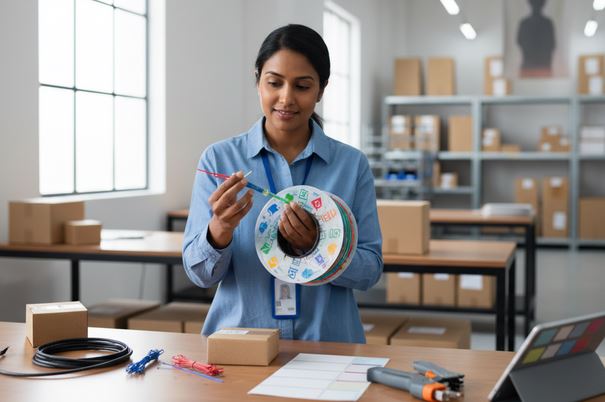Brand visibility influences how customers perceive a company’s value and reliability. Every detail that reflects a brand’s identity helps strengthen recognition and trust. Businesses look for practical methods to reinforce their identity through simple yet effective tools that integrate seamlessly into daily operations.
Custom printed cable ties serve as a versatile option for achieving this goal. They combine functionality with subtle promotion to increase recognition across industries. Their practical use in packaging, installations, and organization transforms them into valuable assets for visual communication.
Functional Utility Meets Marketing Innovation
Cable ties serve as reliable tools that secure and organize cables or items. When enhanced with branding elements, they merge utility with promotional purpose. Below are key ways they connect function with marketing.
● Visual Branding: Each printed tie displays company colors, logos, or slogans that strengthen recognition.
● Dual Purpose: They perform an organizing function while promoting the brand in everyday settings.
● Professional Appearance: Printed ties convey attention to detail and precision in all business operations.
● Practical Integration: They work efficiently in packaging, construction, and events without disrupting workflows.
● Affordable Promotion: They provide continuous exposure without the cost of traditional advertising tools.
Reinforces Brand Recognition
Repetition of brand visuals helps build familiarity and trust. Every time a customer sees a logo, it strengthens association and recall. Printed cable ties create such exposure in regular business operations without requiring extra promotional effort.
They serve effectively in packaging, events, or installations where visibility matters. A consistent appearance of the logo fosters long-term brand recognition. Over time, this consistency positions the company as reliable and professional in the customer’s mind.
Cost-Effective Branding With Lasting Impact
Promotional materials can require significant investment. Printed ties provide a cost-effective approach that continues to deliver exposure after initial use. Their longevity ensures that the branding remains visible through repeated applications.
Durable materials preserve clarity and color over time. This ensures that each tie maintains a professional appearance even after extended use. Such resilience provides long-term promotional value without additional expense.
Enhances Professionalism And Consistency
Uniform presentation strengthens customer confidence. Personalized cable ties align with company color schemes, packaging materials, and branding standards. This uniformity creates a polished and coordinated impression in every setting.
Below are practical ways custom ties help maintain professional consistency across operations:
● Brand Cohesion: Each tie complements packaging and labeling materials, maintaining a unified brand image.
● Attention to Detail: Small, branded accessories reflect precision and reliability to customers.
● Organized Presentation: Neat and consistent use of ties enhances visual appeal in installations and deliveries.
● Customer Confidence: A coordinated appearance builds trust and strengthens long-term client relationships.
● Reinforced Identity: Uniform presentation across all contact points supports recognition and professionalism.
Ideal For Events And Promotional Activities
Corporate events and trade fairs create opportunities for exposure. Customized cable ties help businesses display their brand effectively during such occasions. Their printed surfaces present the company name and logo in an appealing and useful way.
Participants who receive or see these ties remember the brand through repetition. As these items remain functional, recipients often reuse them, extending visibility beyond the event. This simple yet practical strategy ensures continued recognition among diverse audiences.
Small branding tools create meaningful impressions that strengthen recognition. The use of custom-printed cable ties combines practical function with subtle promotion to increase visibility. Their durability, versatility, and professional appearance make them effective components of any marketing strategy.

